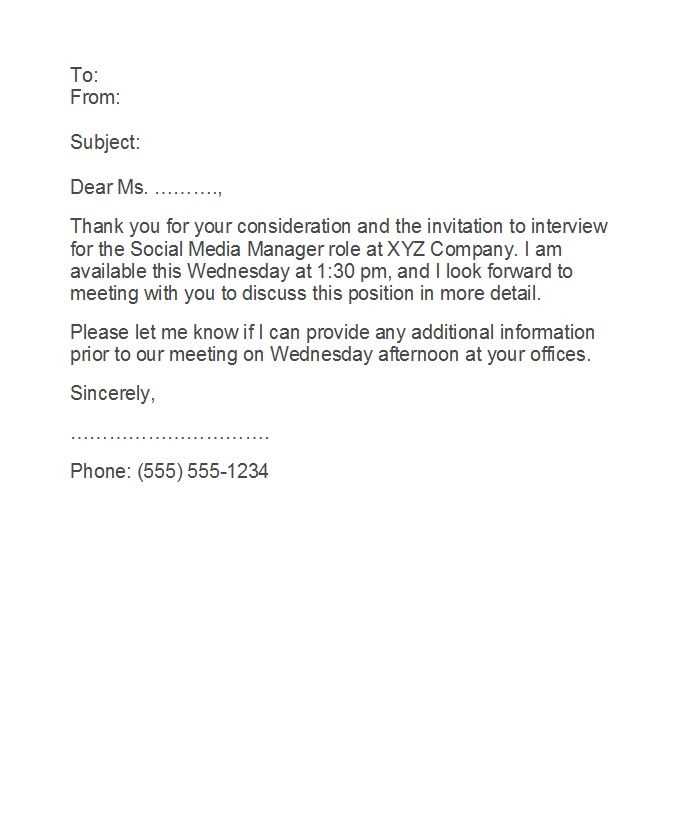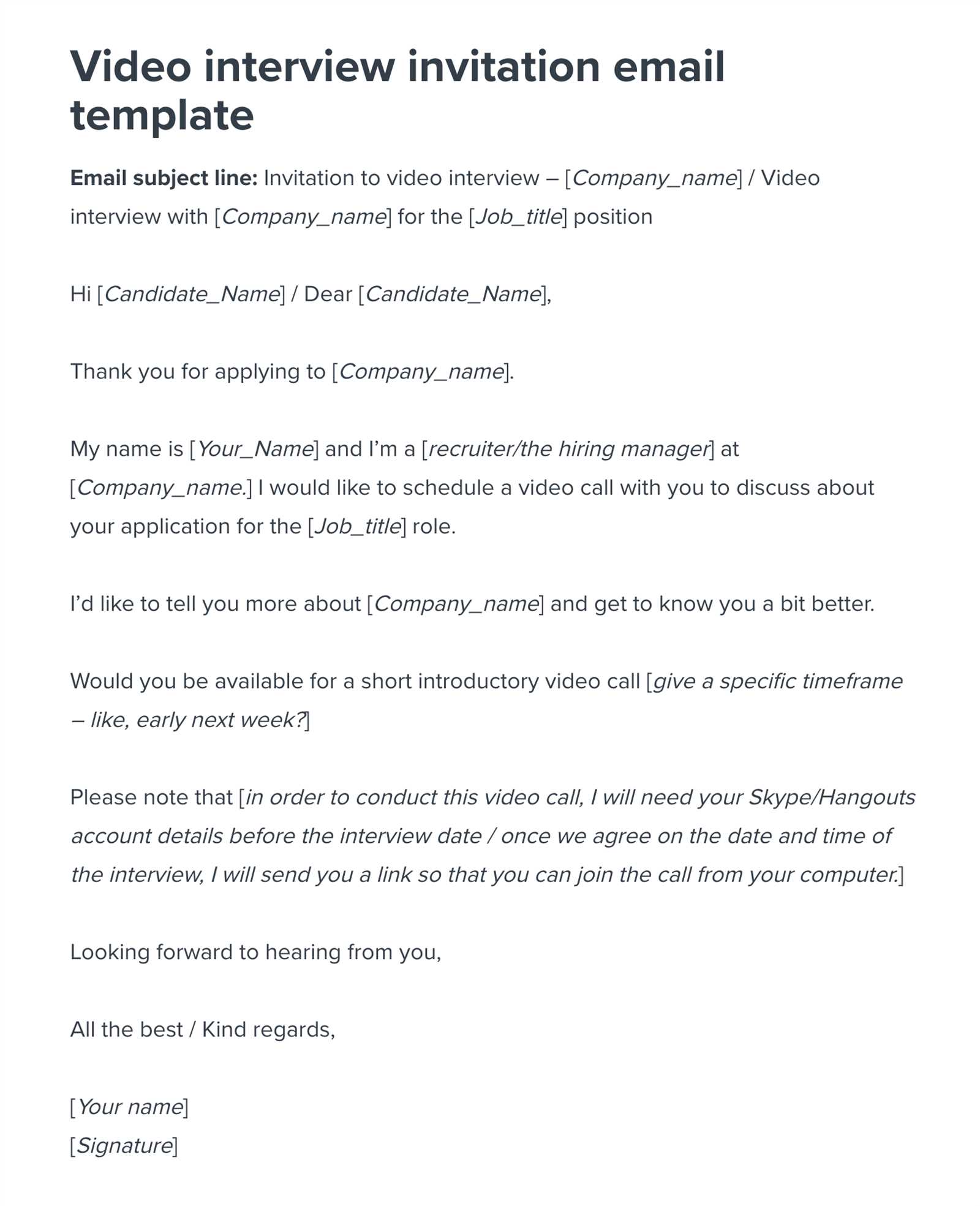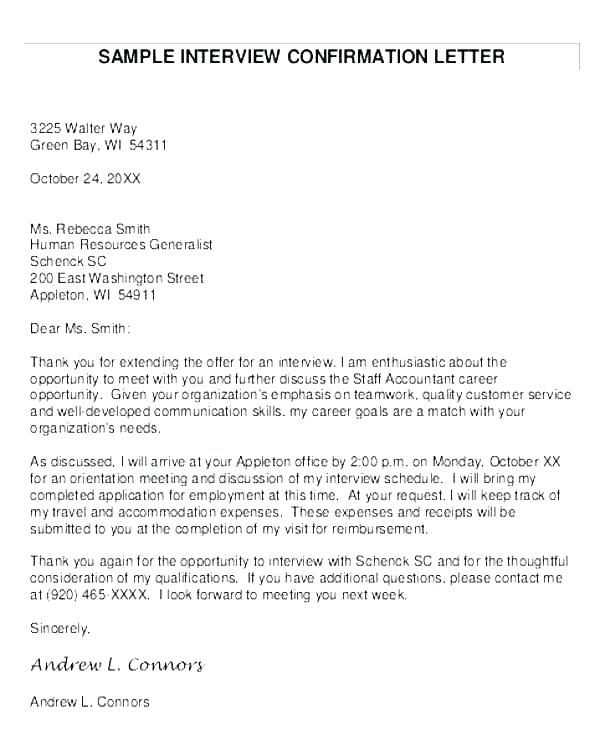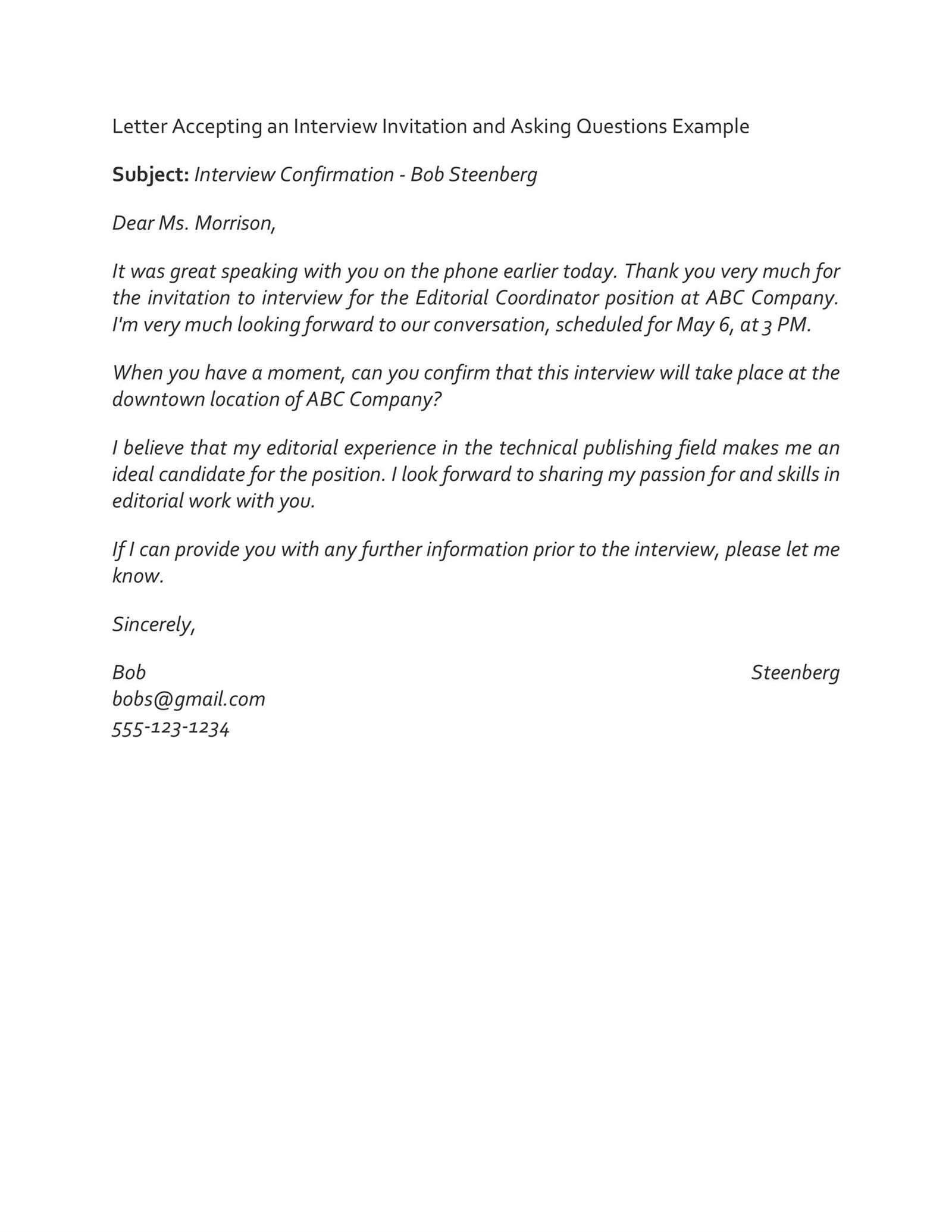How to Create an Effective Interview Invitation Letter

Reaching out to potential candidates with clear and professional messages is a crucial part of the hiring process. Crafting an effective communication that sets the tone for the upcoming conversation can significantly impact how candidates perceive the opportunity and the organization. A well-structured message can convey professionalism and ensure both clarity and enthusiasm for the upcoming interaction.
Personalization plays a key role in making the recipient feel valued. By customizing your approach, you show respect for their time and interest in the position. A thoughtful and respectful tone can motivate the recipient to respond promptly and prepare adequately for the scheduled meeting.
Creating a message that conveys all necessary details without overwhelming the reader is an essential skill. From providing essential logistics to setting expectations, every part of the message should be carefully considered. Clear communication helps avoid confusion and ensures a smooth process from start to finish.
Crafting a Professional Interview Invitation
When reaching out to candidates, your message should exude professionalism and clarity. The tone of your communication sets the stage for the upcoming interaction and influences how the recipient perceives your organization. A polished and well-crafted approach ensures that all important details are conveyed without causing confusion or misunderstanding.
Start by addressing the candidate directly, using their name, to establish a personal connection. This simple step demonstrates respect and sets a positive tone for the communication. Make sure to clearly state the purpose of the message and provide relevant information, such as the date, time, and location for the upcoming conversation. By organizing the details in a simple and straightforward manner, you reduce the likelihood of any miscommunication.
Additionally, ensure that the language used is both respectful and encouraging, reflecting the professional environment. A tone that is warm yet formal can help make the candidate feel welcomed while maintaining the appropriate level of professionalism. Lastly, end the message with a courteous closing, thanking the recipient for their time and expressing anticipation for the upcoming discussion.
Key Elements of a Strong Invitation
To effectively engage a potential candidate, the message you send should include several essential components. These elements ensure that the recipient understands the purpose and feels both informed and valued. A balanced approach of clarity and professionalism is necessary to establish a positive tone while conveying all the necessary details.
Personalization and Clarity
Begin with a personalized greeting to establish rapport. Using the recipient’s name helps create a connection and demonstrates attention to detail. Clearly state the reason for reaching out and outline the main points, such as when and where the conversation will take place, how it will be conducted, and any preparation required. Providing this information concisely makes it easy for the recipient to respond and prepare appropriately.
Polite and Professional Tone
The language you use should convey respect and professionalism, making the recipient feel valued. A courteous yet formal tone ensures that the message is received positively. Avoid overly casual language, but also ensure the communication is welcoming, so the recipient feels comfortable and confident about the upcoming engagement.
Tailoring Your Message to Candidates
Customizing your communication for each recipient helps create a more personal and engaging experience. By considering the individual’s background, the role they’re being considered for, and their potential contributions, you can make your message feel more relevant and meaningful. This approach not only strengthens the connection but also demonstrates your attention to detail and respect for the recipient.
Customizing the Tone and Content
Adjust the tone based on the candidate’s experience and the nature of the role. For example, for a senior-level position, you may want to use a more formal approach, while a more casual tone might be appropriate for an entry-level role. Additionally, include details that are specific to the position and the candidate’s background to make the message feel tailored and thoughtful.
Key Information to Personalize

There are several areas where you can personalize the message, including the candidate’s name, position applied for, and any specific details related to their application. Highlighting these elements helps show that you’ve taken the time to review their qualifications and are genuinely interested in them as a potential fit for the organization.
| Element | Personalization Tip |
|---|---|
| Greeting | Use the candidate’s full name to make it feel personal. |
| Role Mention | Include the exact position they applied for to demonstrate attention to detail. |
| Event Details | Customize the date, time, and format of the conversation based on the candidate’s availability. |
Personalization and Customization Tips
To make your communication stand out, tailoring it to each individual can make a significant difference. By adding a personal touch, you demonstrate genuine interest in the candidate and make the process feel more engaging. Customization involves more than just addressing the recipient by name; it’s about aligning the content with their background and the specifics of the role they’re being considered for.
Include Relevant Details
Ensure that your message includes key information that resonates with the candidate’s qualifications and experience. Referencing their background shows that you’ve carefully reviewed their profile. For example, mentioning a specific skill or experience they listed on their resume reinforces that you value their expertise and are excited about their potential fit for the position.
Adjusting Tone Based on Role
The tone of your communication should reflect both the candidate’s experience level and the nature of the position. For instance, for a senior-level role, a more formal tone may be appropriate, while an entry-level or creative position might benefit from a more relaxed, approachable style. Always aim to strike a balance between professionalism and friendliness, ensuring that the candidate feels both respected and welcomed.
Tip: A warm yet professional tone can encourage timely responses and set the stage for a positive interaction.
Ensuring Clear Communication in Invitations

Effective communication is crucial when reaching out to potential candidates. Ensuring that your message is straightforward and easy to understand can help prevent confusion and set the right expectations. By providing clear details about the upcoming interaction, you increase the chances of a timely and positive response.
One of the most important aspects of clear communication is simplicity. Avoid using overly complex language or ambiguous terms that might leave room for interpretation. Instead, focus on delivering key information in a concise and organized manner. Providing details such as the time, location, and format of the upcoming conversation should be straightforward to ensure there is no uncertainty.
Another factor to consider is the tone of your message. While clarity is essential, maintaining a polite and approachable tone helps establish a professional yet welcoming atmosphere. Clear communication involves not just the words used, but also the way the recipient feels when reading the message. A well-structured, easy-to-follow communication helps candidates feel prepared and respected.
Effective Language for Scheduling Interviews
Using precise and polite language is essential when coordinating meetings with potential candidates. Clear communication helps both parties understand the schedule and expectations. The way you phrase dates, times, and formats can make the process smoother and more professional, ensuring that the candidate feels confident and well-prepared.
Key Phrases for Scheduling
When organizing a conversation, use phrases that are both respectful and direct. Here are some effective ways to frame your message:
- “Please let us know your availability for…”
- “We would like to schedule a meeting at your convenience. Please suggest a time that works best for you.”
- “Could you kindly confirm your availability for…”
- “Would [date] at [time] work for you?”
- “Please reply with your preferred time for the meeting.”
Maintaining Flexibility
Offering flexibility is important, as it shows consideration for the candidate’s schedule. When suggesting potential times, it’s a good idea to include alternatives in case the initial suggestion doesn’t work. This makes it easier for the recipient to find a suitable time without feeling pressured.
- “If the proposed time doesn’t work, please let us know a few times that suit you.”
- “We’re happy to adjust based on your schedule, so feel free to suggest an alternate time.”
- “Please inform us if another day or time would be more convenient.”
Common Mistakes to Avoid in Invitations
When reaching out to candidates for a potential discussion, it’s easy to make missteps that can create confusion or cause the message to be overlooked. Avoiding common errors ensures a professional approach and helps establish a positive tone right from the start. A well-crafted message conveys respect and organization, making it more likely for the recipient to engage promptly and positively.
One frequent mistake is the lack of clarity in the message. Not providing key details such as the time, format, and location can leave the recipient unsure of what to expect. Always make sure the essential information is presented in a clear and direct manner to avoid misunderstandings.
Another common error is not maintaining a polite and respectful tone. A message that feels rushed or impersonal can give the wrong impression. Taking the time to express warmth and professionalism can greatly enhance the recipient’s perception of the opportunity and the organization.
Lastly, overlooking the candidate’s time zone can lead to scheduling conflicts. Always confirm the time zone when suggesting a meeting time to avoid any confusion, particularly when dealing with candidates in different regions.
Improve Your Invitation with These Tips
Enhancing your message can significantly increase the chances of a prompt and positive response. By following a few simple guidelines, you can create a more professional and engaging request, ensuring that recipients feel valued and well-informed. Small adjustments can make a big difference in how your message is received.
Key Elements to Include

Make sure to include the following essentials to ensure your message is clear and complete:
- Clear subject line to grab attention
- Concise and respectful wording
- All relevant details like time, date, and location
- Polite request for confirmation or alternative scheduling
- Contact information for any follow-up questions
Enhance Tone and Approach
The tone you use plays a crucial role in setting the right impression. Here’s how to enhance your communication:
- Use friendly yet professional language
- Personalize the message to make the recipient feel special
- Be clear, but avoid being overly blunt
- Express enthusiasm about the opportunity to connect